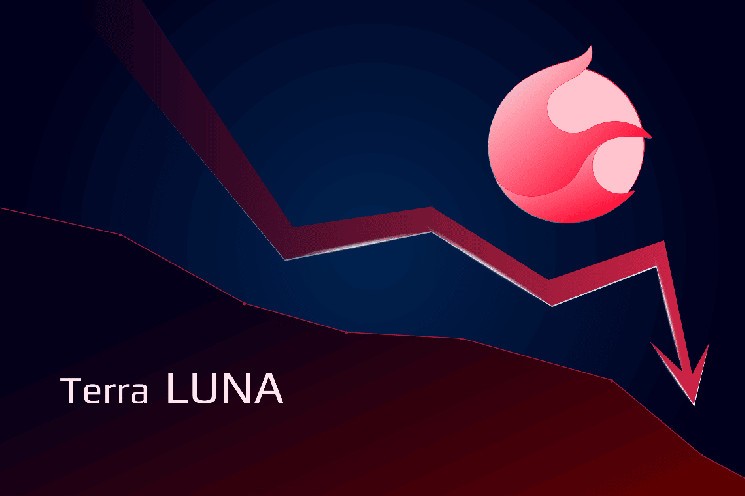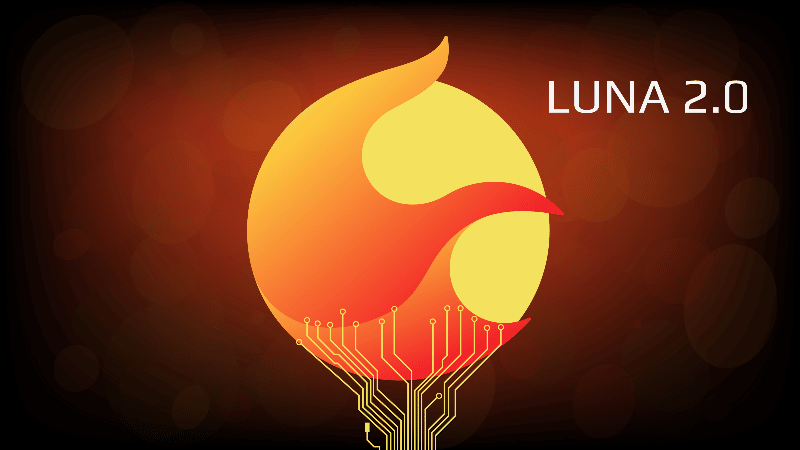Terra and Luna Classic: what are they?

Terra Classic and Luna Classic are simply the new names given to Terra and Luna after the implosion of their ecosystem in May 2022.
Terra was the name of the blockchain and ecosystem, while Luna was the name of its cryptocurrency. UST, on the other hand, was the name of the stablecoin on which the ecosystem was built.
On 6 May 2022, LUNA, now LUNC (Luna Classic), began to lose value significantly and abruptly, thus undermining UST’s coverage.
On 8 May 2022 UST, now called USTC (Terra Classic USD), consequently lost its peg with the dollar. Being a stablecoin pegged to the value of the US dollar (USD), the loss of the peg created a lot of turmoil, and a series of cascading problems that caused its value to implode on 10 May.
Summary
- The fall of the Terra-Luna ecosystem, now called Classic
- The new Terra 2.0 project
- Investigations into the failure of the old ecosystem
- The price of LUNC
- The confusion between LUNA and LUNC
The fall of the Terra-Luna ecosystem, now called Classic
Within a single week, it lost more than 90% of its value, falling below $0.1, then plummeting further to below a penny.
In other words, UST came to lose nearly 100% of its value, consequently imploding the entire Terra ecosystem of which it was in fact the bedrock.
LUNA suffered a similar fate, losing virtually 100% of its value within a week.
Due to a convoluted and risky algorithm that created and destroyed LUNA in order to keep the market value of UST as close to $1 as possible, far more new LUNA tokens were created in that week than were on the market before the collapse.
This exaggerated creation of new tokens not only destroyed the value of existing tokens, but also disrupted the entire Terra ecosystem to such an extent that at one point its developers decided to abandon it.
The new Terra 2.0 project
However, they did not decide to stop operating in the crypto sector, but decided to establish a new project called Terra 2.0, with the related cryptocurrency Luna 2.0. UST, however, was permanently abandoned.
At that time, the old Terra ecosystem was renamed Terra Classic, and the new cryptocurrency was renamed LUNC, or Luna Classic. The UST stablecoin was also renamed to USTC, or Terra Classic USD.
The new ecosystem took on the old name Terra, as if to indicate some sort of continuity with the old one that had been abandoned, and the new cryptocurrency took on the name LUNA. However, a new algorithmic stablecoin was not created.
The new cryptocurrency debuted on the financial markets on 28 May 2022, which was just over three weeks after the collapse of the previous ecosystem had begun.
So Terra Classic and LUNC should not be confused with Terra and LUNA, because they are now two different things.
The new Terra project, with the new LUNA cryptocurrency, are continued by the same developers who created the original project in 2019, and who abandoned it after the collapse, while the Terra Classic project with the LUNC cryptocurrency are continued by other developers who took over after the historic ones left.

The birth of the Terra 2.0 project
Investigations into the failure of the old ecosystem
Several investigations by the judiciary and law enforcement agencies are still ongoing on the May collapse in different countries around the world. Under particular indictment are the company Terraform Labs, which created and operated the original Terra ecosystem, and its founder Do Kwon. For this reason, a kind of sword of Damocles hangs over the new Terra project, which could cause even very serious consequences for the project itself in the future.
Instead, Terra Classic and LUNC have started from scratch, almost without a past, since this was practically wiped out by the May implosion.
The price of LUNC
On 28 May, when the new LUNC was born, LUNC had a market value of just over 0.1 thousandths of a dollar, virtually 100% less than the all-time high touched in April 2022 at nearly $120. Over the months, its value has risen a great deal since 28 May, although it has always remained hugely below the April peak.
Now, it has risen above 0.4 mils, or +300% from the lows of late May.
The huge circulating supply means that, despite this low price, it still has a theoretical market capitalization of more than $3 billion, which, despite May’s implosion, places it 28th overall in the crypto markets, ahead of Crypto.com’s CRO, Monero, Stellar, Bitcoin Cash and Algorand.
However, it should be mentioned that the vast majority of LUNC’s existing tokens are actually locked, so this calculation does not reflect the actual circulating supply, only the total supply.
USTC, on the other hand, after imploding as low as 0.6 cents, has now climbed back up to nearly 4 cents, or +695%, which is nowhere near enough to try to climb back up toward $1.
The confusion between LUNA and LUNC
The new cryptocurrency LUNA, on the other hand, is now following a different path.
Unfortunately, there are still websites or exchanges where LUNC has the old name LUNA, and this creates confusion. It should not be called that because it is confused with the new LUNA cryptocurrency. They are however easy to distinguish because while the price of LUNC is still much less than $1, the price of LUNA on the other hand is well over $1.
LUNC is still very easily found on a large number of exchanges, because it was in fact already present before the implosion under the name LUNA. In other words, it remained available on more or less all exchanges even after the May collapse, simply by changing its name.
A similar argument must be made for USTC, although in this case there is no name issue because a new version of UST has not been created.
It is worth adding that at present, LUNC and USTC seem to all intents and purposes to be purely speculative assets, which means good mostly for day-trading.
The development of the old Terra ecosystem is no longer based on the UST algorithmic stablecoin, as this has almost completely lost its value. And although there is a new team running it, for now it still does not seem to have managed to get out of the purely speculative sphere it has been in for four months now.
This is made clear by the value of LUNC, which although it has risen a great deal from the lows, is still too far from the highs to think that it could not be considered a speculative asset.







 Bitcoin
Bitcoin  Ethereum
Ethereum  Tether
Tether  USDC
USDC  Dogecoin
Dogecoin  Cardano
Cardano  TRON
TRON  Bitcoin Cash
Bitcoin Cash  Chainlink
Chainlink  Polygon
Polygon  Litecoin
Litecoin  LEO Token
LEO Token  Dai
Dai  Ethereum Classic
Ethereum Classic  Stacks
Stacks  OKB
OKB  Cronos
Cronos  Stellar
Stellar  Cosmos Hub
Cosmos Hub  Hedera
Hedera  Maker
Maker  Monero
Monero  Theta Network
Theta Network  Algorand
Algorand  NEO
NEO  Synthetix Network
Synthetix Network  Tezos
Tezos  Gate
Gate  EOS
EOS  KuCoin
KuCoin  IOTA
IOTA  Bitcoin Gold
Bitcoin Gold  Tether Gold
Tether Gold  TrueUSD
TrueUSD  Enjin Coin
Enjin Coin  Zilliqa
Zilliqa  0x Protocol
0x Protocol  Ravencoin
Ravencoin  Qtum
Qtum  Holo
Holo  Siacoin
Siacoin  Basic Attention
Basic Attention  Dash
Dash  Decred
Decred  Zcash
Zcash  NEM
NEM  Ontology
Ontology  Waves
Waves  Lisk
Lisk  DigiByte
DigiByte  Numeraire
Numeraire  Status
Status  Nano
Nano  Hive
Hive  Pax Dollar
Pax Dollar  Steem
Steem  Huobi
Huobi  OMG Network
OMG Network  BUSD
BUSD  Ren
Ren  Bitcoin Diamond
Bitcoin Diamond  Bytom
Bytom  HUSD
HUSD  Kyber Network Crystal Legacy
Kyber Network Crystal Legacy  Energi
Energi  Augur
Augur